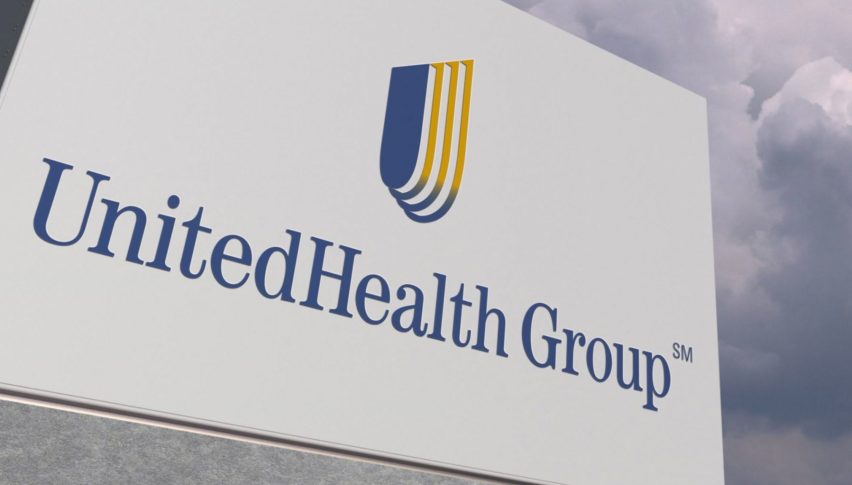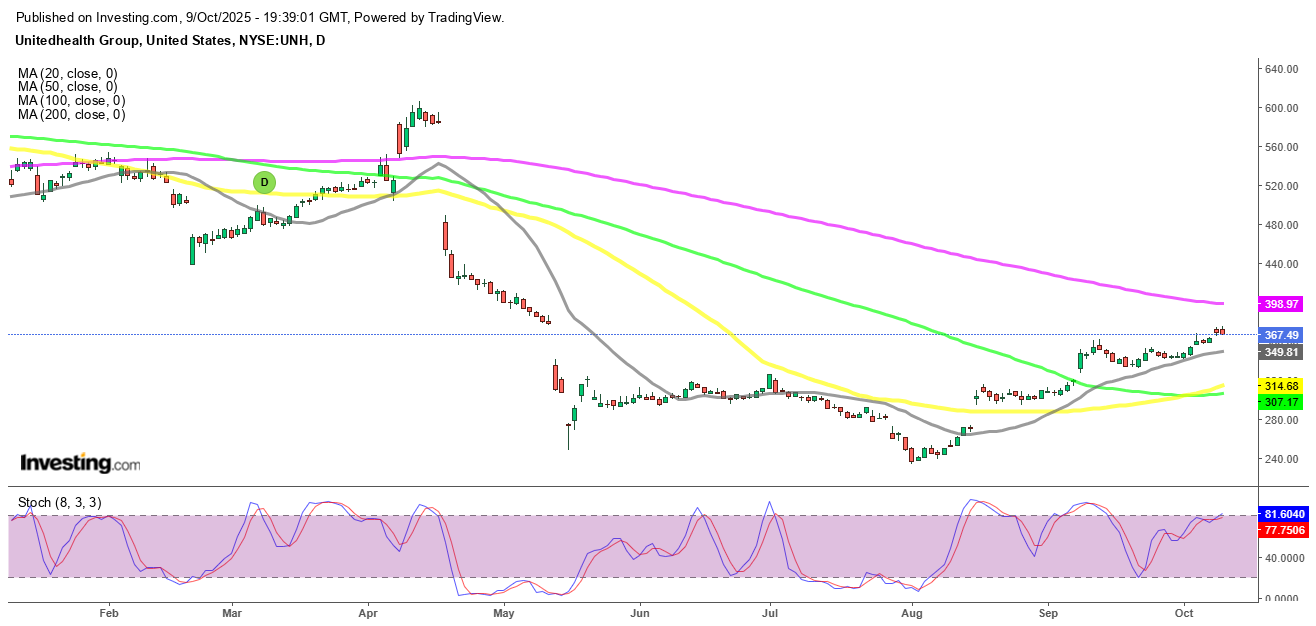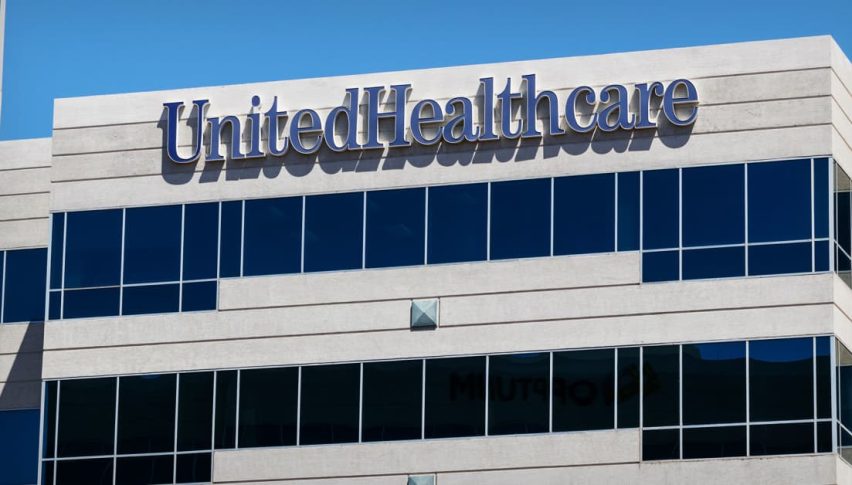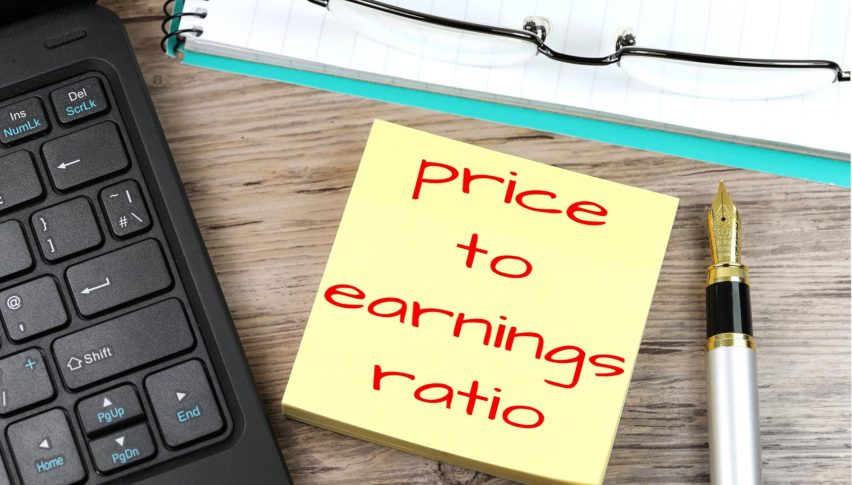UnitedHealth UNH Stock Recovers 55% from Summer Lows Ahead of Q3 Earnings
After a steep mid-year selloff, UnitedHealth Group has staged an impressive rebound as investors regain confidence ahead of its upcoming...

Quick overview
- UnitedHealth Group has rebounded over 55% since bottoming out in August after a significant mid-year selloff.
- The company's recovery is driven by strong Medicare Advantage enrollment expectations and reinstated earnings guidance.
- Berkshire Hathaway's $1.6 billion investment in UnitedHealth has boosted investor confidence amid ongoing market challenges.
- Despite the positive momentum, shares remain 35% below their April highs, with upcoming Q3 results critical for further gains.
After a steep mid-year selloff, UnitedHealth Group has staged an impressive rebound as investors regain confidence ahead of its upcoming third-quarter earnings release.
From Collapse to Recovery
UnitedHealth Group (NYSE: UNH), America’s largest health insurer, has experienced one of the most volatile stock rides of the year. After peaking near $600 in April, shares plunged more than 60% to around $235 by early August, following the company’s decision to suspend its forward-looking earnings forecast.
However, since bottoming out in August, UnitedHealth has been on a powerful recovery streak, climbing over 55% in just three months. The rebound was triggered when management reinstated guidance during its second-quarter earnings release in July, which reignited investor confidence and sparked renewed buying momentum.
Despite the impressive recovery, shares remain roughly 35% below their April highs, and investors are watching closely to see if upcoming Q3 results on October 28 can fuel another leg higher.
Technical Picture: Resistance in Sight
On the technical front, UNH shares have shown resilience, rebounding sharply off the 200-month SMA (purple)—a key long-term support zone that helped stabilize the stock in August. However, buyers are now testing the 100-month SMA (green) near $374, a level that has acted as a temporary ceiling this week.
UNH Chart Monthly – Buyers Need to Push Above the 100 SMA
If the stock can close convincingly above this resistance, it could open the path toward $400–$420, though the move will likely depend on a strong Q3 report and improved forward guidance.
UNH Chart Daily – The 20 SMA Is Acting As Support
Tight Margins and Earnings Challenges
The U.S. healthcare sector operates under narrow margins due to regulatory constraints. Since the Affordable Care Act, insurers must spend at least 85% of premiums on medical expenses, leaving limited room for profitability adjustments.
UnitedHealth’s financial setback earlier this year stemmed from a larger-than-expected utilization rate, meaning members used more medical services than projected. This forced the company to slash its 2025 EPS outlook from $24.65 to $14.65, creating significant uncertainty around future earnings.
While cost-cutting measures and improved operational efficiency could lead to a guidance upgrade later this month, investors are cautious. Still, the long-term fundamentals and scale of UnitedHealth’s business continue to make it one of the sector’s most resilient plays.
Medicare Strength Drives Renewed Optimism
Much of the recent momentum stems from strong expectations in Medicare Advantage enrollment. Management projected that 78% of UnitedHealth members will enroll in highly rated plans next year—an important metric since higher ratings mean larger bonus payments from the federal government.
This outlook not only bolsters UnitedHealth’s near-term revenue but also strengthens its long-term positioning in the senior healthcare market. The potential government payouts—estimated to be worth billions—helped push shares firmly back into recovery mode in recent weeks.
Berkshire Hathaway’s Vote of Confidence
Adding to the optimism, Berkshire Hathaway disclosed a $1.6 billion stake in UnitedHealth, totaling more than five million shares as of June 30. The investment, led by Warren Buffett, faced short-term turbulence during UnitedHealth’s weak Q2 performance but has since moved closer to breakeven thanks to the recent rally.
This strategic backing served as a signal of institutional confidence, calming fears over litigation risks and rising medical costs that had weighed heavily on sentiment earlier in the year.
Mixed Q2 Results Leave Questions
UnitedHealth’s second-quarter report painted a mixed picture. On one hand, Optum Rx and commercial memberships posted solid revenue growth; on the other, rising medical costs compressed margins and dragged on earnings.
Analysts remain cautious, forecasting 2025 revenue of $448.9 billion and EPS of $16.21, suggesting only modest profitability improvement amid ongoing pricing pressures. The company will need to show progress on cost control and efficiency in its next report to sustain the current rally.
Dividend Support Reinforces Stability
UnitedHealth’s commitment to shareholder returns has also played a key role in restoring confidence. The company recently confirmed a $2.21 per-share dividend, reinforcing its financial health and stability.
In a market increasingly jittery about inflation and policy uncertainty, consistent dividend payouts provide a crucial anchor for investors seeking defensive growth exposure.
Conclusion: Poised for a Stronger Finish
After a turbulent year marked by profit warnings and a sharp mid-year selloff, UnitedHealth’s turnaround story is gaining momentum. Strong Medicare Advantage projections, Berkshire Hathaway’s strategic support, and steady dividends are fueling optimism heading into the third quarter.
If management delivers improved earnings visibility and cost discipline in the next report, UNH could be on track to reclaim its former highs—marking one of the most compelling comeback stories in the healthcare sector this year.
- Check out our free forex signals
- Follow the top economic events on FX Leaders economic calendar
- Trade better, discover more Forex Trading Strategies
- Open a FREE Trading Account



